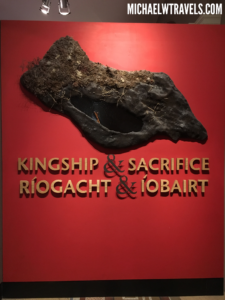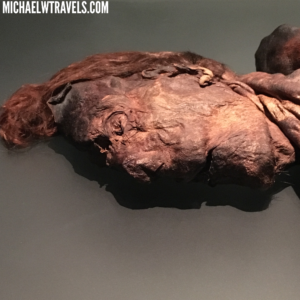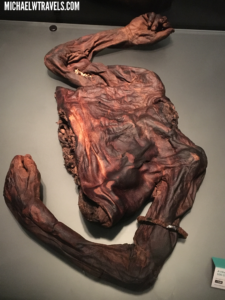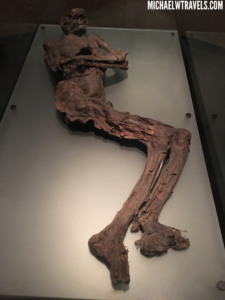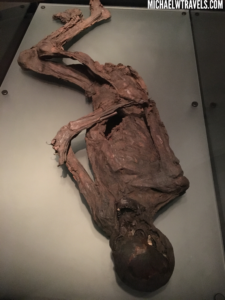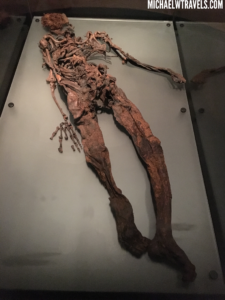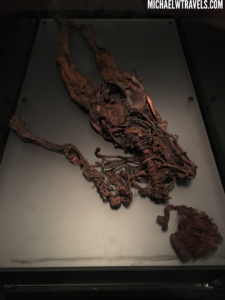In February 2017, the Michael W Travels family took a quick trip to Ireland.
We spent a few days in Dublin where we visited the Guinness Storehouse, checked out some pubs and also visited some other interesting sights. We made sure to get out of Dublin for one day taking a quick visit to Northern Ireland and the Giant’s Causeway.
Besides the usual attractions in Dublin, there were a couple of odd sites that I had to visit.
I had to visit the Kingship & Sacrifice exhibit at the National Museum of Ireland to check out the Bog Bodies.
Before I continue, here are some related posts that I’ve previously written about:
- The Mutter Museum: A Museum of Medical Oddities
- The Baksheesh Pays Off
- The International Museum of Surgical Sciences
- A Shocking Collection of Oddities: The Kuntskamera
- Meguro Parasitological Museum (In my Japan: Days 8 & 9 Tokyo post)
- The Skull Tower (In my Balkans Trip Recap of Nis, Serbia)
- 4,000 Skeletons at The Capuchin Crypt of Santa Maria della Concezione
- A Museum of Curiosities in Connecticut
- Ossuary at San Bernardino alla Ossa (In my Malta & Milan recap post)
- Skull & Bones at the Catacombs in Lima
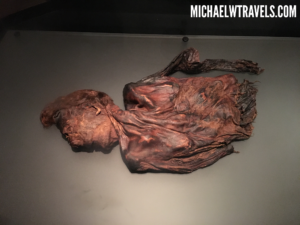
Clonycavan Man
So you might be wondering, what are bog bodies?
Upon first sight, bog bodies look like leathery partial remains of human bodies. Most appear to be flattened, almost like the bodies were deflated. The bodies still have some amazing detail, considering how old they are. Hair and fingernails are still visible on some. Some decorative jewelry was still on some of the bodies, too.
The bog bodies are pretty fascinating but not the best exhibit for young kids. (Lucas didn’t like the exhibit but he did enjoy exploring a crypt earlier in the day (more on that another time) so who knows…)
Here a quick definition from Wikipedia:
“A bog body is a human cadaver that has been naturally mummified in a peat bog.
Unlike most ancient human remains, bog bodies have retained their skin and internal organs due to the unusual conditions of the surrounding area. These conditions include highly acidic water, low temperature, and a lack of oxygen, and combine to preserve but severely tan their skin. While the skin is well-preserved, the bones are generally not, due to the acid in the peat having dissolved the calcium phosphate of bone.”
The exhibit Kingship & Sacrifice at the National Museum of Ireland in Dublin explores Iron Age bog bodies discovered in Ireland and those from other museum collections.
The museum arranged the bodies in a way where if you’re passing through the exhibit, you first read some info about what’s on display. Then, if you choose you walk in a short circular path to the body on display. The point of this is that if you don’t want to see the body, you don’t have to.
I found the info quite interesting. Info included things like when and where the body was discovered, what year the body was from, the condition of the body, approximate age and how they died, height of the body, social status, as well as the person’s diet.
Check out some photos of the bog bodies we saw on display:
Clonycavan Man: Early Iron Age 392-201 BC
Oldcroghan Man: Early Iron Age 362-175 BC
Gallagh Man: Early Iron Age 400-200 BC
Baronstown West Man: Early Iron Age 200-400 AD
What do you think about the Kingship & Sacrifice bog bodies exhibit? Would you like to see it in person during a trip to Ireland?
The Kingship & Sacrifice exhibit is located at the National Museum of Ireland- Ground floor Archaeology, Kildare Street, Dublin 2.
